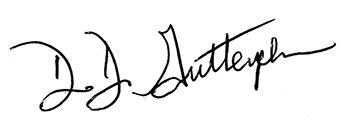Will the Creative Class Go MAGA?
It may be hard to resist the lure of power and patronage.

Paris—When you hear the word culture, what do you reach for? The Nazis, famously, reached for their guns—a response presumably based on the belief that there is something about art and culture that is intrinsically hostile to authoritarian values. But the myth that creativity is always on the side of progress—that artists must also be humanists, and therefore enemies of reaction—is equally cherished by many of us on the left. However culture is defined in the age of Trump, we tend to assume a shared set of “enlightened” values with its makers. The Christian right may have the megachurches and the White House (and, at least for the moment, the House, the Senate, and the Kennedy Center). But we will always have Hollywood, Broadway, National Public Radio, Saturday Night Live, the Smithsonian, and the Whitney.
This assumption, however comforting, does not long survive a visit to the Musée d’Orsay, the great collection of Impressionist and post-Impressionist art housed in a former train station on the left bank of the Seine. There you will find dazzling works by Monet, Manet, Degas, Renoir, and Cézanne. And on the top floor, there’s a temporary exhibition of sketches and drawings by René Hermann-Paul devoted to l’affaire Dreyfus—the trial, conviction, and eventual exoneration of Alfred Dreyfus, a Jewish captain in the French Army accused of spying for Germany and charged with treason, a case that tore French society apart at the end of the 19th century.
Dreyfus’s story is well-known: Framed by right-wing and antisemitic forces inside the French Army, he was sentenced to life imprisonment on Devil’s Island and spent four years rotting there, off the coast of French Guiana, before a campaign organized by his family and spearheaded by the writer Émile Zola eventually led to his exoneration. Hermann-Paul, who covered Dreyfus’s retrial as a sketch artist for Le Figaro, was part of a small band of Dreyfusards that also included Claude Monet, Marcel Proust, and Camille Pissarro.
But what the exhibition also reveals is that the artists responsible for most of the Orsay’s treasures—particularly Edgar Degas, whose drawings, paintings, and sculptures of dancers draw thousands of visitors to the museum every year, but also Pierre-Auguste Renoir, Paul Cézanne, and Auguste Rodin—were all firmly in the anti-Dreyfus camp, along with the poet Paul Valéry and the novelist Jules Verne. Degas, despite a lifelong friendship with the writer Ludovic Halévy (born into a Jewish family), became a virulent antisemite—at one point throwing a model out of his studio and accusing her (falsely) of being Jewish when she expressed pro-Dreyfus sentiments. Renoir merely despised Jews in private, while Rodin seems to have been more of an opportunist who, when forced to choose sides, opted for safety.
Four months into Trump’s second term, it’s too early to know how many members of our own creative class will follow the example of Wall Street law firms and Ivy League administrators. But it seems likely that many will succumb to the lures of power and patronage—especially with so many of America’s great fortunes already in MAGA’s cheering section. What is certain is that these four years are going to test all of us: our convictions, our courage, and above all our capacity for solidarity.
The last of these, as Amy Littlefield reminds us, has already been tried and, in the case of women needing to terminate late-term pregnancies, found wanting. Yet as she demonstrates in her deeply moving cover story, the failure to secure reproductive care for all is an omission we can no longer afford. Nor, as John Semley reports, can we afford to keep ignoring the baleful consequences of online gambling or, as Jacob Silverman entertainingly illustrates, the unchecked metastasis of cryptocurrency into our financial system. And speaking of illustrations, we have Jimmy Tobias on the state of America’s nuclear arsenal and an excerpt from Mimi Pond’s brilliant graphic biography of Jessica Mitford.
Plus Lovia Gyarkye on Katie Kitamura’s novels of middle-class angst, Karrie Jacobs on learning from Los Angeles, Peter Linebaugh and Marcus Rediker on the radical historian Christopher Hill, Dan Sinykin on the cult of the close reader, and Bijan Stephen on Lady Gaga’s latest. Not to mention prophetic editorials, enlightened comment, and eye-opening dispatches.
Thanks for reaching for The Nation.

D.D. Guttenplan
Editor








